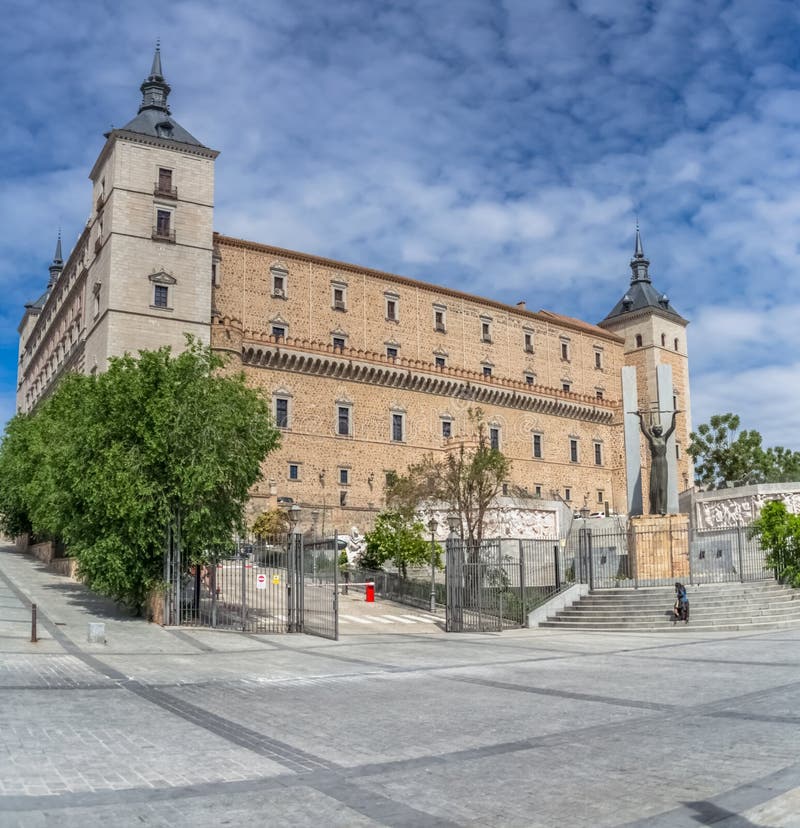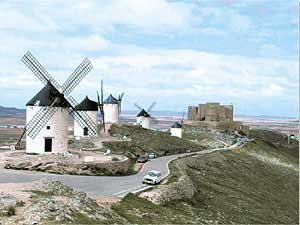Castilla-La Mancha
Historic architecture
Dramatically sited towns
Don Quixote’s windmills
This region is not an obvious choice for many tourists but it does have one of Spain’s most attractive cities – Toledo, crammed with interesting architecture from the Middle Ages. Two unusually sited towns also worth a visit are Cuenca perched on a ravine and Alcalá del Júcar, where some of the houses have been extended into the soft rock of the chalky hills into which they are built.
Although daunting at first, the plains of La Mancha, well known for Spain’s most famous fictional character, Don Quixote, has a certain charm in its quirky landscape of windmills and castles.
Breathtakingly beautiful places in Toledo
Toledo is an ancient city in Spain well known for its sweet almond candies, historic museums, artistic crafts, and Jewish, Arab, and Christian monuments. Toledo's cathedral is an important landmark with Gothic architecture and choirs attracting visitors annually. The Old Town is a must-see place with peaceful courtyards, narrow lanes, cobblestone streets, artisan shops with churches, palaces, and mosques. Sinagoga del Transito is a prominent Jewish monument designed with intricate geometric and floral designs and inscriptions in Arabic and Hebrew is a historic place to visit. Las Murallas is an ancient rampart that has a well-preserved history in Toledo.
In Toledo you will find some beautiful attractions that you just cannot miss! Places like Enjoy The View At Palacio De Cibeles, National Museum Of The Great Lakes, and Enjoy Music Under The Stars At The Toledo Zoo and many more. Continue scrolling to know more.
Enjoy The View At Palacio De Cibeles
One of the most architectural appealing structure in the entire city, Palacio de Cibeles is located in the historical center of Madrid. Formerly the city's main office, it is now Madrid's city hall. Alcala, also the most phot genic monument in the city, is just 3 minutes away from the place. Apart from offering stunning views, it also boasts a rooftop restaurant and an ideal place for cocktail parties.
Plaza de Zocodover
The Plaza de Zocodover is the main square of Toledo in Castile-La Mancha. From 1465 to 1960, the square has been the main hub of the town where toledanos enjoy bullfights and public inquisitions were held. In the present, the square is filled with various restaurants and hosts the weekly tuesday market as well as the livestock market. Visitors would surely love admiring the impressive architecture of the buildings and cafes that surround the plaza and also enjoy shopping at the weekly market.
Toledo Cathedral
Toledo Cathedral is a roman catholic church built in the 13th century and features Gothic Architecture. It's construction started in 1226 and lasted until 1943. It is also known to be the most famous Cathedral in Spain because of the length of its construction.
Museum of Santa Cruz
Museum of Santa Cruz in Toledo consists of displays the personal archaeological collection of Cardinal Lorenzana. It also features different sections of Archaeology, Fine Arts and Decorative Arts. Truly, visitors who are art enthusiasts will surely have a blast in the museum.
Monastery of San Juan de Los Reyes
Arguably, piety and publicity were the driving forces behind the construction of this monastery and church complex. After Spanish monarchs Fernando and Isabela won against Portuguese forces at Toro in the late 15th century, they built this church in thanksgiving. Among the many beautiful features of this religious site include Mudejar-style ceilings and arched windows, with artistic elements resembling those found in Muslim mosques. The first floor of the cloisters, on the other hand, showcase the best of Gothic architecture. It is also good to note that in the northeastern facade of the church, you can find some chains. These are a sort of advertising, broadcasting to the world, for generations to come, that Fernando and Isabela freed their country from Muslim conquest.
Alcázar of Toledo
The Alcázar of Toledo is a stone fortification located in the highest part of Toledo, Spain. Most of the city was rebuilt between 1939 and 1957 after the siege of the Alcázar during the Spanish Civil War. Located on the banks of the Tagus in central Iberia, Toledo is known as the «Imperial City» because it was the main venue of the court of Charles V, Holy Roman Emperor in Spain, and as the «City of the Three Cultures» for the cultural influences of Christians, Muslims, and Jews reflected in its history. Located on the banks of the Tagus in central Iberia, Toledo is known as the «Imperial City» because it was the main venue of the court of Charles V, Holy Roman Emperor in Spain, and as the «City of the Three Cultures» for the cultural influences of Christians, Muslims, and Jews reflected in its history.

Synagogue of El Transito
This 14th-century building is in a class of its own in terms of the variety of its inspirations. The synagogue's Arabic inscriptions and Mudéjar elements borrow some artistic sensibilities from Islamic mosques. This means that the building has an abundance of beautiful geometric and floral motifs. You'll also find Hebrew writings, which give the place a rather solemn air. Other attractions inside the synagogue include costumes and other artifacts highlighting Jewish culture in Spain.
Santa María La Blanca
Santa María la Blanca, located in the heart of Toledo, is a famous museum that used to be a synagogue. It is considered to be the oldest synagogue building in the country and serves as a symbol of unity among the three cultures present in the Iberian Peninsula.
Castle of San Servando
Around the 600s A.D., a monastery was built on the site where this castle now stands. An attack in 1110 by the Muslim Saracens, however, destroyed the monastery. King Alfonso VIII then donated the ruined monastery to militaristic priests called the Knights Templar. These unique religious men converted the building into a fortress to prevent any further Muslim invasions. This colorful history probably earned the castle a place in the mind of one of Spain's most famous painters, El Greco. His painting, «View of Toledo,» puts this fortress front and center. Fast forward to today, this castle now serves as a youth hostel and hotel.



